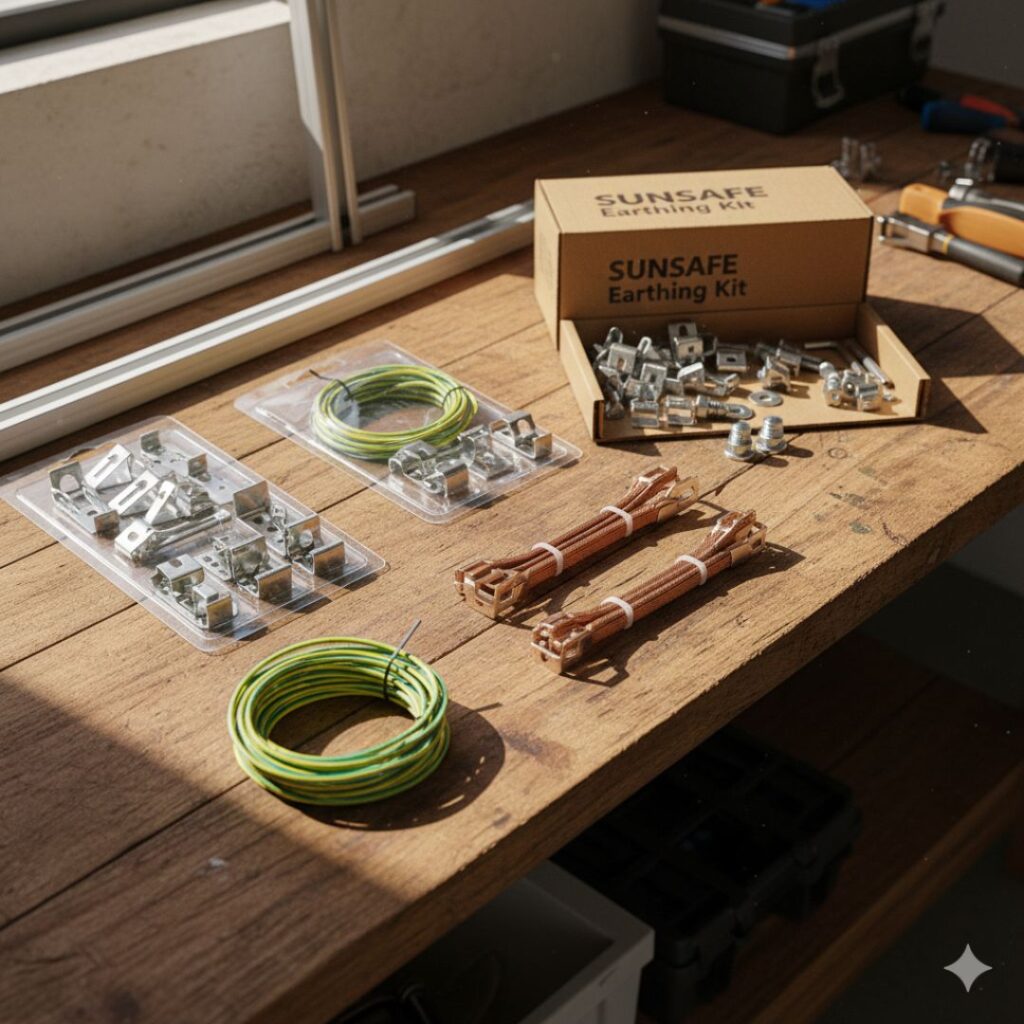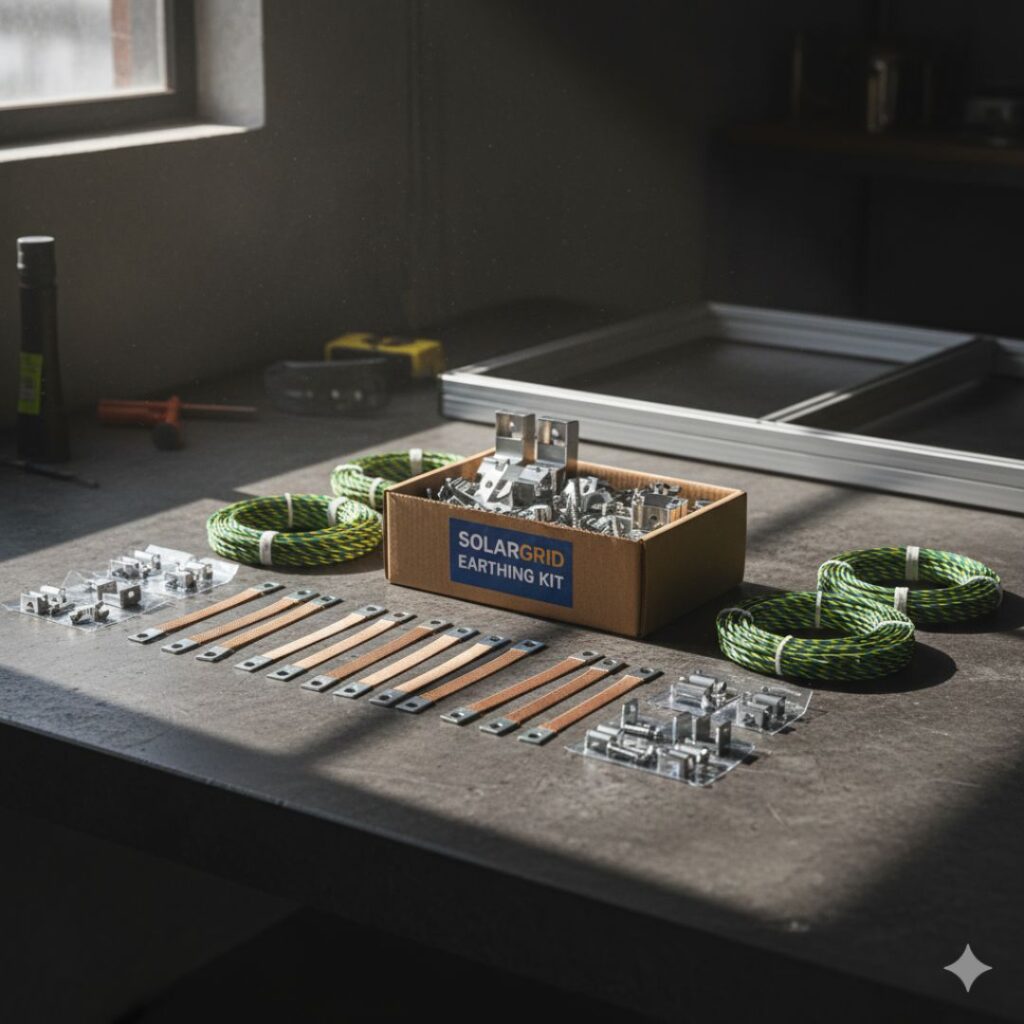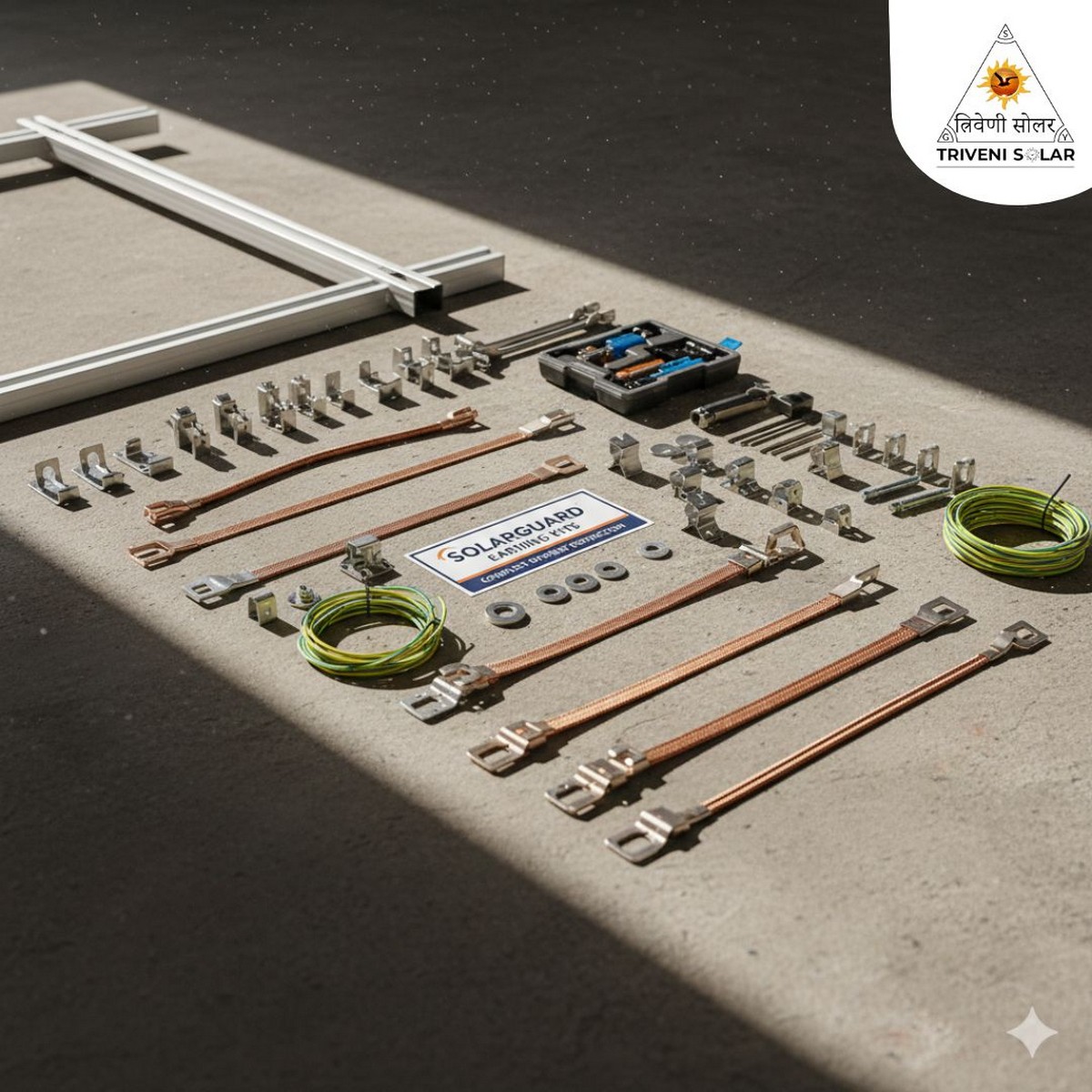Earthing Kits are essential electrical safety devices that protect people, appliances, and buildings from voltage surges and lightning strikes. They include rods, conductors, clamps, and chemical compounds, ensuring low-resistance grounding for residential, commercial, and industrial setups.
Table of Contents
- Importance of Earthing in Electrical Systems
- Components of Earthing Kits
- Types of Earthing Kits
- Step-by-Step Installation Guide
- Maintenance and Safety Tips
- Comparing Earthing Kits
- Common Mistakes and Troubleshooting
- Applications in Residential, Commercial & Solar Systems
- FAQs About Earthing Kits
- Conclusion + Call to Action
Importance of Earthing Kits in Electrical Systems
Electrical safety is paramount in homes, industries, and solar power setups. Proper earthing prevents electrical shocks, protects appliances, and ensures longevity of your electrical installations. A well-installed earthing kit creates a low-resistance path for excess electricity, like lightning strikes or power surges, directing it safely to the ground.

How Earthing Prevents Electrical Hazards
- Redirects high voltage to the ground, protecting human life.
- Prevents damage to electrical equipment by stabilizing voltage fluctuations.
- Reduces the risk of fire caused by stray currents or short circuits.
Regulatory Standards & Compliance
Standards such as IS 3043:2018 (Bureau of Indian Standards) guide proper earthing practices. Compliance ensures safety, reliability, and insurance coverage in case of electrical mishaps.
Components of Earthing Kits
Understanding the components is crucial for effective installation and performance.
Earthing Rods: Copper vs GI
Earthing rods are the backbone of any earthing kit. Copper rods offer superior conductivity and durability, while Galvanized Iron (GI) rods are cost-effective and widely used in industries.
Conductors & Clamps
High-quality copper or aluminum conductors connect the rod to the electrical system. Clamps ensure secure and corrosion-free connections.
Chemical Compounds & Soil Enhancement
Chemical earthing uses conductive compounds to lower soil resistance, improving performance in rocky or dry soils where traditional rods may be less effective.
Types of Earthing Kits
Copper Earthing Kit
- Excellent conductivity and corrosion resistance.
- Long lifespan (15–25 years).
- Ideal for residential, commercial, and solar systems.
Galvanized Iron (GI) Earthing Kit
- Cost-effective option.
- Moderate conductivity and lifespan (10–15 years).
- Suitable for industrial and commercial projects.
Chemical Earthing Kit
- Uses salts and chemical compounds for low-resistance earthing.
- Best for areas with rocky or dry soil.
- Easy installation and maintenance.
Plate and Pipe Earthing Kits
- Plate earthing: Uses a metallic plate buried underground.
- Pipe earthing: Uses a GI or copper pipe for grounding.
- Used in high-voltage installations and industrial sites.
Earthing Kits Step-by-Step Installation Guide
Earthing Kits Tools Required
- Hammer drill or digging tools
- Earthing rod, clamps, and conductors
- Chemical compound (if required)
- Multimeter for resistance testing
Site Selection and Soil Preparation
- Choose a location with moist soil for better conductivity.
- Ensure no interference from underground pipelines or utilities.
- Dig a pit for rod or plate placement.
Installation Process
- Drive the rod/pipe into the ground at the recommended depth (3–4 meters for residential setups).
- Attach conductors securely using corrosion-free clamps.
- Pour chemical compounds around the rod if chemical earthing is used.
- Test resistance with a multimeter; it should be less than 1 ohm.
- Cover the pit and mark the location for future maintenance.
Earthing Kits Maintenance and Safety Tips
Periodic Resistance Checks
Test the grounding system every 6–12 months to ensure it maintains low resistance.
Visual Inspection
Inspect clamps and conductors for rust or wear and replace if needed.
Cleaning and Replacement
Remove debris, soil, or chemicals that reduce conductivity. Replace rods or plates every 10–25 years depending on the type.
Comparing Earthing Kits
Data Table: Resistance, Lifespan, and Cost
| Type | Average Resistance | Lifespan | Approximate Cost |
|---|---|---|---|
| Copper | 0.5–1 Ω | 15–25 years | ₹2,500–₹4,000 |
| GI Rod | 1–2 Ω | 10–15 years | ₹1,200–₹2,000 |
| Chemical | 0.2–0.8 Ω | 10–20 years | ₹3,000–₹5,000 |
| Plate/Pipe | 0.5–1.5 Ω | 15–20 years | ₹2,500–₹4,500 |
Pros & Cons of Each Type
- Copper: High conductivity, expensive.
- GI Rod: Affordable, moderate conductivity.
- Chemical: Low resistance, needs soil replenishment.
- Plate/Pipe: Durable, suitable for high-voltage setups.
Earthing Kits Common Mistakes and Troubleshooting
- Using dry or sandy soil without chemical enhancement.
- Loose or corroded clamps causing high resistance.
- Incorrect rod depth or placement.
- Skipping periodic maintenance checks.
Troubleshooting Tips
If resistance exceeds 1 ohm, inspect clamps, soil moisture, and rod integrity. Replace or chemically enhance soil as needed.

Applications in Residential, Commercial & Solar Systems
Residential Earthing Kits
Protects homes from electrical shocks and appliance damage. Essential for geysers, air conditioners, and solar panels.
Commercial Earthing Kits
Ensures safety in offices, factories, and shopping complexes. Supports lightning protection and stabilizes voltage fluctuations.
Solar Power Systems
Prevents electrical faults in solar inverters, panels, and battery banks. Essential for both rooftop and ground-mounted solar installations.
Case Study
A leading solar project in Maharashtra installed chemical earthing kits across 50 rooftop installations. The system maintained <1Ω resistance for 3 years, reducing maintenance downtime by 35%.
FAQs About Earthing Kits
How often should an earthing kit be checked?
Check resistance and inspect components every 6–12 months for optimal performance.
Can I install an earthing kit myself?
Yes, with proper tools and guidance, DIY installation is possible. For industrial setups, professional assistance is recommended.
Which earthing type is best for my home/industry?
Copper earthing is ideal for residential and commercial systems. Chemical earthing works best in dry or rocky soils.
Does earthing improve appliance lifespan?
Yes, a properly grounded system reduces voltage fluctuations, protecting electrical appliances and extending their lifespan.
Can earthing prevent lightning damage?
Yes, it provides a safe path for lightning current, minimizing damage to buildings and electrical systems.
Conclusion
Investing in a high-quality Earthing Kit is critical for safety, reliability, and peace of mind. At SolarStructure.co.in, we offer premium copper, GI, and chemical earthing kits tailored for residential, commercial, and solar applications. Ensure your home and business are fully protected today!


